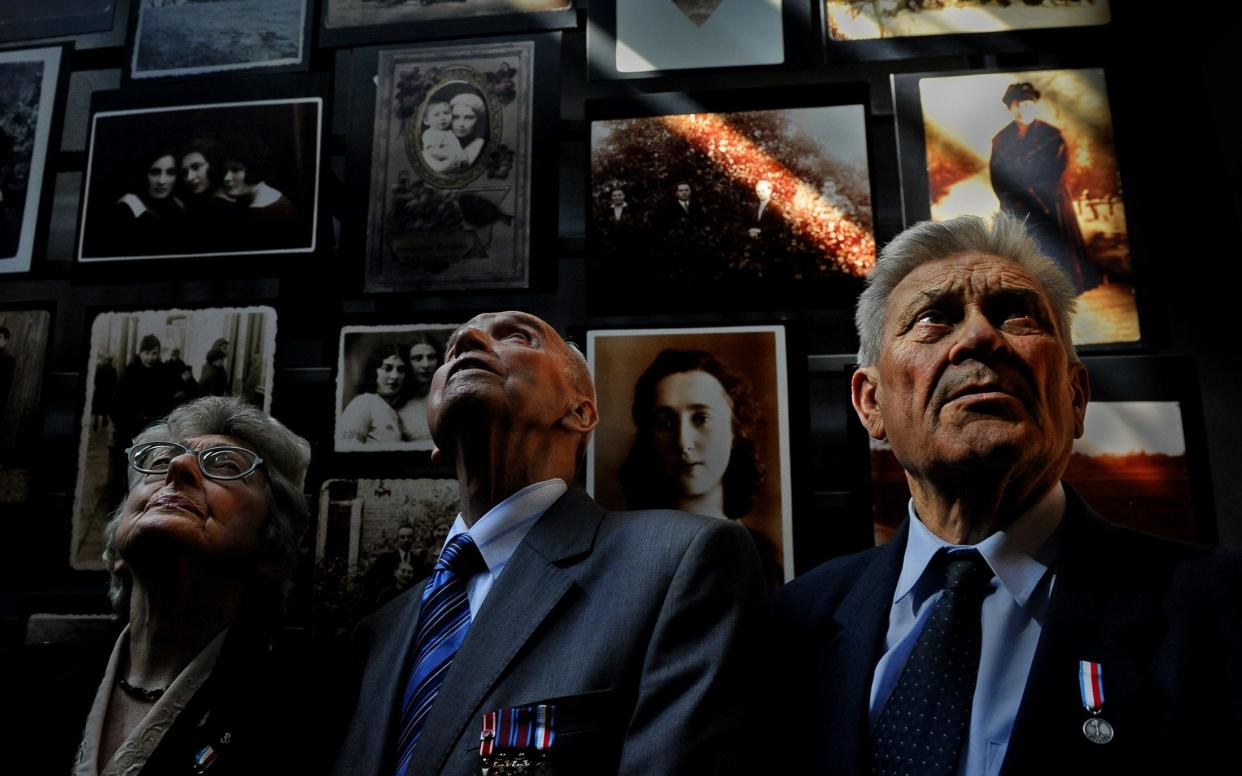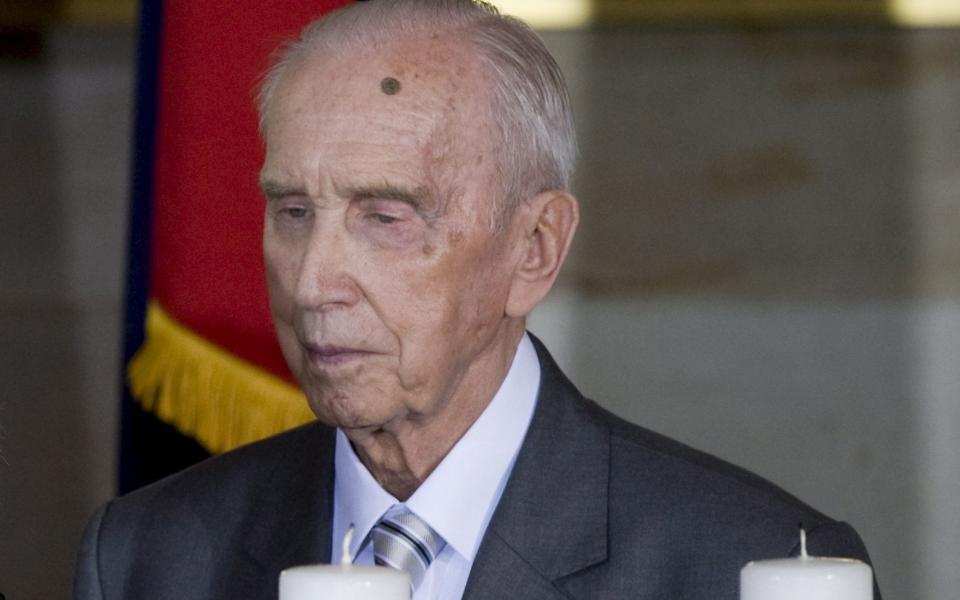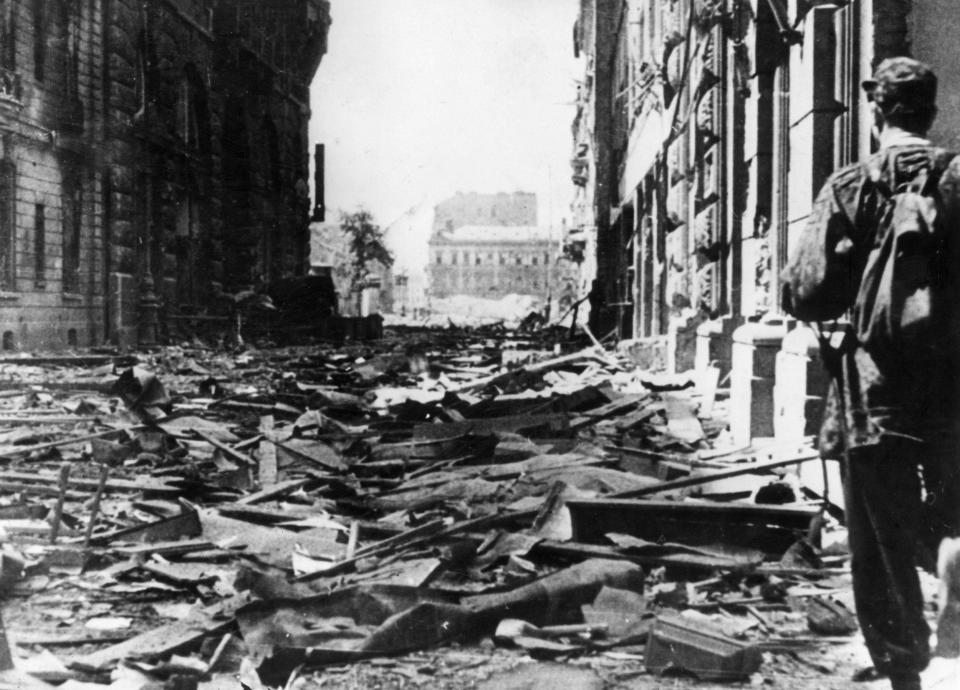Józef Walaszczyk, factory manager dubbed the ‘Polish Schindler’ who employed Jews to save them from the gas chambers – obituary

Józef Walaszczyk, who has died aged 102, was Poland’s oldest living Righteous Among the Nations – a title given by Yad Vashem, Israel’s Holocaust memorial and museum, to non-Jews who risked their lives to save Jews during the Holocaust.
Germany invaded Poland on September 1 1939, and in December, because of his knowledge of the German language, Walaszczyk was appointed manager of a potato flour factory in Rylsk, central Poland, which employed two hundred workers, who were also provided with food and accommodation.
In 1941, a Jewish friend from before the war, a Mr Wengrow, asked Walaszczyk to employ Jews from the nearby ghetto in Rawa Mazowiecka, as the Germans planned to liquidate the ghetto and kill the Jews.
Walaszczyk recalled: “I wanted to help him because he once saved me … I played cards in Warsaw … I came home and tried to figure out how to get out of my debts. Ask your mother for money for a card debt? And this Jew, Wengrow, says to me: ‘You are so sad, Sir, I think you have a problem. I know you need money. How much?’ He gave me a loan.”
Walaszczyk approached a certain German officer by the name of Miller, head of the local Arbeitsamt (labour office). The meeting did not start well, as the German “took out a pistol and said, ‘You want to bribe a German for Jews?’ ”. In the end, for a hefty sum of money and a promise to keep topping it up every couple of weeks, Miller agreed to allow Walaszczyk to employ 30 Jews in his factory.
This arrangement survived for six months before Miller withdrew his permission, whereupon Walaszczyk warned his Jewish workers to hide as soon as they saw German trucks. On one occasion, when Walaszczyk was on his way to a meeting at the Arbeitsamt, German trucks appeared at the factory, and five Jews who failed to hide were arrested and transported to the ghetto in Lodz. “Those who listened to me survived,” Walaszczyk recalled.
That year, 1941, Walaszczyk was staying in a hotel room near Warsaw with his girlfriend, Irena Front, when a Gestapo inspection took place. The Germans were looking for Jews and it was at this point that Irena surprised Jozef by revealing that she was Jewish.
“The fact that she is a Jew,” he recalled, “I only found out when the Gestapo burst into the hotel at 15 Żurawa Street in Warsaw, where we were staying. It was then that Irena told me that her surname was not Bartczak but Front, and that she was Jewish”.
Unfazed (“I don’t brag about it, but I had nerves of steel”), Walaszczyk hid Irena in a closet, left the room and locked the door behind him, feigning a bout of vomiting, which distracted the Germans.

He subsequently took Irena Front to his flat on Krucza Street. There he hid her and provided her with a fake, non-Jewish identity. Despite her new identity, however, Irena was arrested again in October 1941 when she left the flat to take a walk. Walaszczyk recalled: “A colleague called me and told me that the Gestapo had arrested Irena. I went to the police station. Once there, it turned out that [she] had been caught with a group of 20 other Jews.
“If something was to be done, it had to be done for them all. I had to arrange for a kilogram of gold by 5 pm – and it was already noon. Only then would the Germans release the Jews.” Walaszczyk managed to collect the bribe. “The Germans took the gold, drank vodka and said that we could go,” he recalled.
In spite of German assurances that Irena Front could safely return to the flat on Krucza Street, Walaszczyk sold the place the next day and bought another flat at 17 Emilii Plater Street, where, in addition to Irena, he sheltered two other Jews – her friend Hanka Staszewska, and Helena Torbeczko. To ensure that they stayed indoors and did not wander outside, Walaszczyk hired a maid to take care of the three.
In 1944, the Warsaw uprising (the Polish underground attempt to liberate Warsaw from German occupation) broke out and Walaszczyk organised for Irena Front, Hanka Staszewska and Helena Torbeczko to escape the besieged city to the Red Cross camp in Podkowa Lesna, and, from there, on to the village of Rylsk, where he was then working and knew of hiding places.
In January 1945, Walaszczyk and Irena returned to Warsaw, where they stayed until the end of the war. Their flat at Emilii Plater Street survived the bombardment of Warsaw, and the two were married.
The only child of a paramedic mother and a journalist father, Józef Walaszczyk was born on November 13 1919 in Czestochowa, Southern Poland, into an affluent family, and grew up in Warsaw. When Jozef was eight, his father died on a visit to the US, leaving his mother struggling financially and often at the mercy of strangers.
“My nanny was let go and my mother took a job at St Joseph’s Clinic on Emilii Plater Street,” he recalled. “I was transferred to a cheaper boarding school on Wileńska Street.” Unable to cope with the new situation, however, his mother and young Jozef moved from Warsaw to Rylsk, where his cousin, Ludwik Okęcki, owned an estate and a potato flour factory.
Before the German invasion, Walaszczyk had already passed the junior high school graduation exam (“the small matriculation”) and gained entrance into the National Education Commission Senior High School of Commerce in Warsaw. From that time, he lived alone in a bachelor flat at 34 Krucza Street.

But all changed when war broke out. At first he was mobilised and sent to the front. He recalled how “the roads were difficult to get through … full of refugees and military personnel everywhere. The places I passed, often still burning following bombardment, gave me goose-bumps. There were crying, terrified people, deprived of their homes – the first victims of the war.”
Not able to find the unit he was sent to join, he returned to Rylsk, where the invading Germans subsequently made him manager of the potato flour factory.
Throughout the war, Walaszczyk was also involved in the Polish underground that resisted the German occupation. He would illegally enter the Warsaw ghetto to visit Jewish friends, bringing them food and clothing. To do this, he would bribe a tram driver to slow down a little when crossing the ghetto, enabling Walaszczyk to jump off the tram safely.
On one occasion he was caught carrying parcels to the Home Army, Poland’s anti-German resistance movement. The Germans who caught him “started questioning me. They beat and kicked. They made me jump. One machine gun fired at my feet and the other over my head. Then they decided to shoot me.
“I was in front of the firing squad and the only thing missing was: ‘[Eins, zwei] drei, Feuer!’ I closed my eyes so as not to see the rifle fire. And at that moment I hear: ‘Halt!’ I did not believe I was alive.”
The Gestapo officer who had intervened said that death would have been too easy for Walaszczyk and that he should instead be sent to the death camp, Auschwitz. His life was spared after his mother intervened with a higher-ranking German, who valued his work at the flour factory.
After the war Walaszczyk and Irena Front moved to Kraków, where he worked in commerce until he was 94.
On May 9 2002, Yad Vashem recognized Józef Walszczyk as Righteous Among the Nations for having rescued in all 53 Jews during the war. That year he published his memoir Przywracanie pamięci (“Restoring Memory”). After reading Walaszczyk’s book, the film director Roman Polański sent him a letter saying that if he had known Walaszczyk’s story before filming The Pianist, he would have made a film about him.
Walaszczyk has been described as “the second Schindler” or “the Polish Schindler”, after the German industrialist and member of the Nazi Party, Oskar Schindler, who saved Jews during the Second World War by employing them in his enamelware factory.
But Walaszczyk remained quite humbled about his actions during the war. “I did what I did because it was the right thing to do,” he said. “I never did it thinking of credit or praise …” And in a 2019 interview he said: “I am happy with my life. I fulfilled my human task …”
Walaszczyk and Irena divorced after the war, but remained on good terms. In 1950 he remarried and had a son with his second wife, before divorcing again and having another son with the third.
Józef Walaszczyk, born November 13 1919, died June 20 2022

 Yahoo News
Yahoo News 
